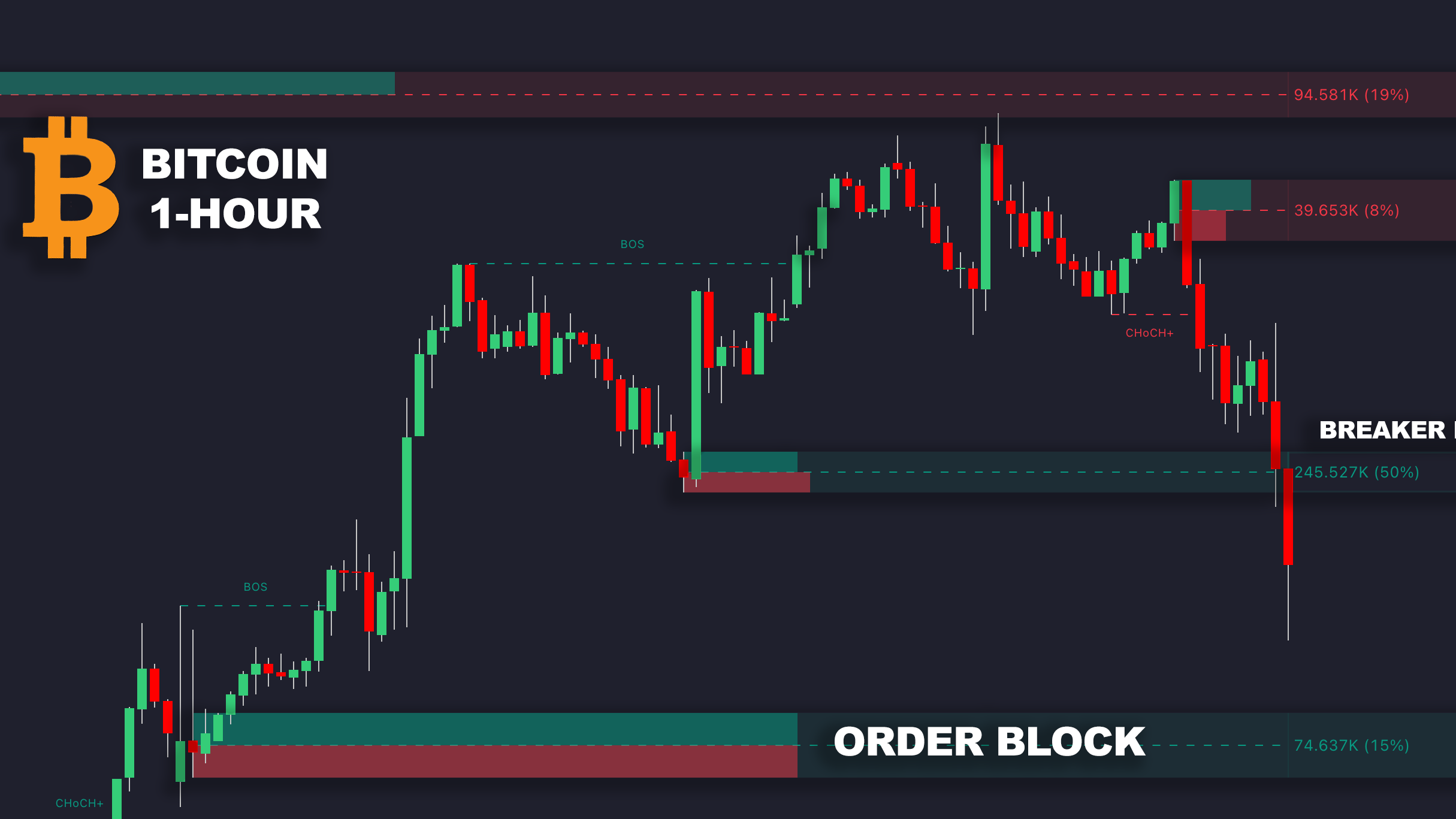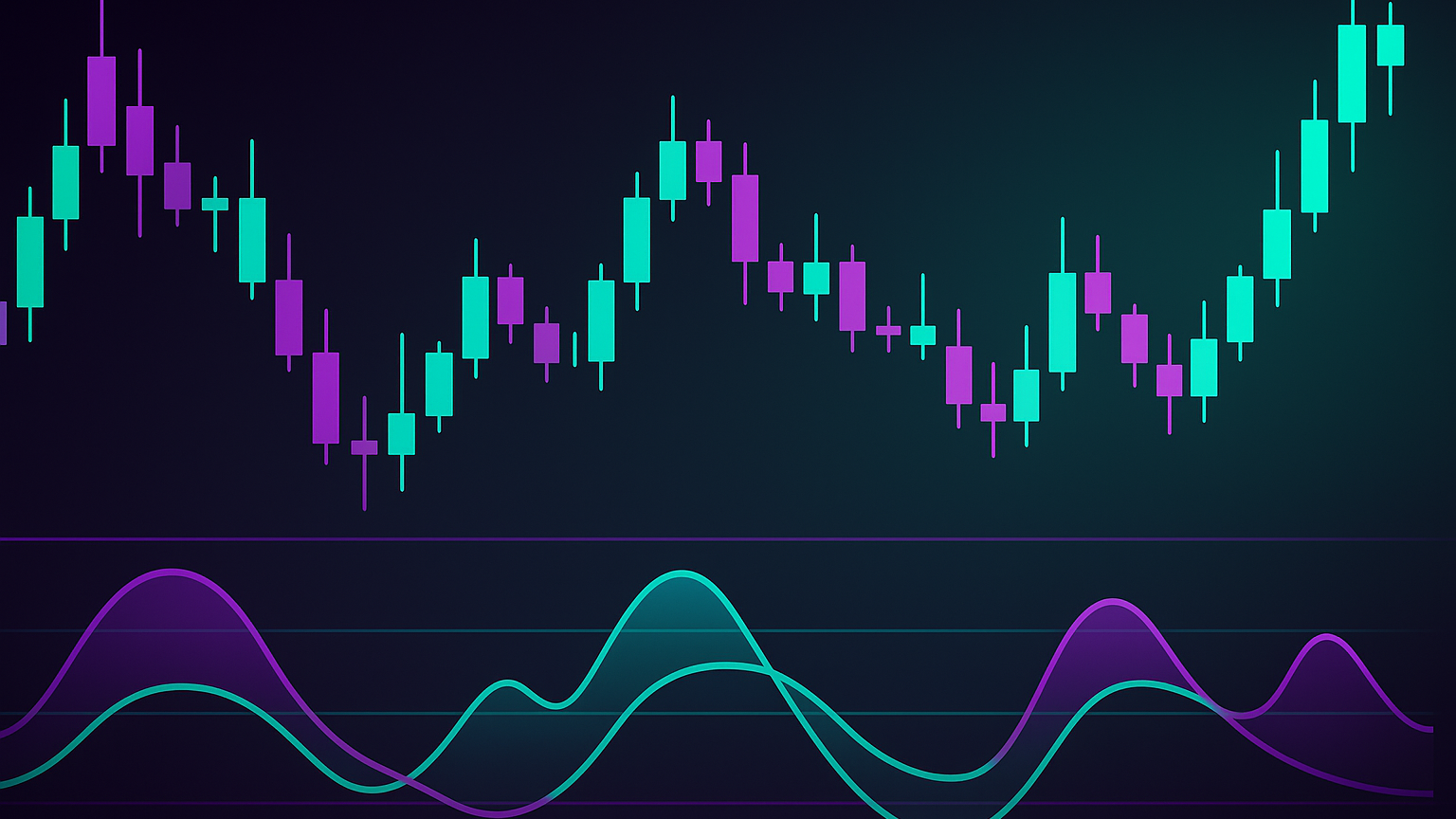Learn about Market Structure Shifts (MSS) in trading, their significance, and strategies for identifying and leveraging these key market movements.
Market Structure Shifts (MSS) are key price movements signaling potential trend reversals in trading. MSS helps traders align with institutional activity, offering early entry points into new trends. Here's what you need to know:
- What is MSS?: MSS occurs when price breaks a swing high or low, indicating a change in market direction. For orientation on these levels, see swing highs and swing lows.
- Why it matters: MSS provides early reversal signals, helping traders time entries and exits effectively.
- How it works: Traders identify MSS through sharp price movements (displacement moves) breaking key levels, often confirmed by full-bodied candles. A concise primer on multiple time frame analysis can help frame these shifts.
- MSS vs BOS vs CHoCH: MSS signals short-term reversals; BOS confirms trend continuation; CHoCH highlights major long-term shifts.
- Tools and strategies: Combine MSS with order blocks, liquidity zones, and multi-timeframe analysis for precise setups. Use automated capabilities from LuxAlgo on TradingView for real-time MSS detection.
Quick Comparison:
| Concept | Signal Type | Timeframe | Location | Purpose |
|---|---|---|---|---|
| MSS | Reversal | Short-term | Swing points | Detect early trend changes |
| BOS | Continuation | Current trend | Support/Resistance | Confirm trend direction |
| CHoCH | Major Reversal | Long-term | Key structure | Signal significant shifts |
Mastering MSS can help traders align with institutional flows and improve decision-making in volatile markets.
Spotting VALID Market Structure Shifts (ICT)
MSS vs BOS vs CHoCH: Key Differences
Market structure analysis revolves around three core signals: MSS (Market Structure Shift), BOS (Break of Structure), and CHoCH (Change of Character). Each plays a unique role in identifying market movements and requires specific techniques for accurate identification. Grasping these distinctions helps traders apply the right strategies for different market scenarios.
What is Market Structure Shift (MSS)
Building on the ICT framework, Market Structure Shift (MSS) occurs when the price breaks through a swing high or low, signaling a possible trend reversal. MSS acts as an early warning system for reversals. To spot MSS, traders need to identify key swing highs and lows and watch for a breakout in the opposite direction of the current trend. This signal is typically confirmed by a displacement move, which adds credibility to the shift. MSS primarily reflects a short-term change in price behavior, often occurring at swing points rather than major structural levels.
MSS vs Break of Structure vs Change of Character
Each of these signals—MSS, BOS, and CHoCH—serves a distinct purpose:
| Concept | Type of Signal | Time Frame | Location | Primary Purpose |
|---|---|---|---|---|
| MSS | Reversal pattern | Short-term | Swing points | Early trend change detection |
| BOS | Continuation pattern | Current trend | Support/resistance levels | Trend confirmation |
| CHoCH | Reversal signal | Long-term | Key structure points | Signaling major trend shifts |
Break of Structure (BOS) occurs when the market establishes a new high in an uptrend or a new low in a downtrend, reinforcing the continuation of the existing momentum. For example, BOS happens when the price breaks through prior resistance, confirming the prevailing trend.
Change of Character (CHoCH), on the other hand, is marked by the break of a key swing point, signaling a significant shift in trend. CHoCH typically indicates a long-term change in price movement. For instance, in a strong uptrend, CHoCH might be triggered by a pronounced downward breach of a previous low, hinting at weakening bullish momentum and a potential reversal.
The difference between these signals lies in their timing and scope. MSS allows traders to identify short-term market changes and act promptly when entering or exiting trades. CHoCH, however, highlights major market transitions, helping traders align their strategies with new trends. BOS, in contrast, focuses on breakouts at specific support or resistance levels, while MSS reflects a broader trend change involving multiple structural breaks.
Avoiding Missteps
Understanding these distinctions is crucial to sidestep common errors. For instance, mistaking false breakouts for MSS might lead to premature trade entries. Similarly, confusing BOS with reversal signals could result in exiting profitable trend-following positions too early. To improve accuracy, traders often combine these signals with volume analysis and confirmation across multiple timeframes. For background on a popular momentum gauge, see Relative Strength Index (RSI).
How to Identify and Trade MSS Patterns
Learn how to spot reversal opportunities early by mastering these techniques. Below, we’ll dive into the key methods for identifying, confirming, and trading MSS (Market Structure Shift) patterns.
Spotting Bullish and Bearish MSS
A bullish MSS occurs when the price breaks above a recent swing high (lower high), signaling a potential shift from a bearish to a bullish trend. On the flip side, a bearish MSS happens when the price breaks below a recent swing low (higher low), suggesting that an uptrend might be losing steam. To avoid being misled by false breakouts, look for a clear and decisive price displacement.
To confirm MSS patterns, analyze swing highs and lows. In an uptrend, a bearish MSS may emerge when a series of higher highs and higher lows is interrupted by a lower low. Similarly, in a downtrend, a bullish MSS forms when the price breaks above a previous lower high with strong momentum. Tools like the Relative Strength Index (RSI), volume analysis, and momentum oscillators can help validate these shifts. For a primer on volume-based confirmation, consider On-Balance Volume (OBV).
Using Multiple Timeframes for MSS Confirmation
Using multiple timeframes can make MSS trading more precise by offering a broader view of the market and helping you fine-tune your entries and exits. Start with higher timeframes, such as daily or 4-hour charts, to get a sense of the overall trend and locate major support or resistance levels. Once the main trend is clear, switch to lower timeframes to zero in on the best entry and exit points. For instance, if a daily chart shows a bullish MSS, you can move to 1-hour or 15-minute charts to pinpoint an entry during a pullback.
Here’s a breakdown of timeframe combinations based on trading styles:
| Trading Style | Primary Timeframe | Secondary Timeframe | Entry Timeframe |
|---|---|---|---|
| Swing Trading | Daily | 4-hour | 1-hour |
| Day Trading | 1-hour | 15-minute | 5-minute |
| Scalping | 15-minute | 5-minute | 1-minute |
Stick to one combination (typically a 4:1 or 6:1 ratio) for at least 30 trades to evaluate its effectiveness.
Combining MSS with Order Blocks and Liquidity Zones
For a more refined strategy, combine MSS patterns with key technical zones. Pairing MSS with concepts like order blocks and liquidity zones can enhance your trade setups. Order blocks represent areas where institutional traders have placed significant orders, often serving as strong support or resistance levels. An MSS near these zones may signal institutional activity.
"Order Blocks are foundational to Smart Money trading. They allow you to enter where institutions have placed large positions and offer clear invalidation and entry logic."
– Louigi_24
Pay attention to Fair Value Gaps (FVGs), which often appear during MSS formations. These gaps highlight price imbalances and can predict future moves. When the price revisits an FVG after an MSS, it can provide a strong entry signal.
Liquidity zones are another critical element, as they show where retail stop-loss orders are likely clustered—usually around swing highs and lows. A practical strategy involves waiting for the price to return to the origin of the displacement move, using nearby FVGs or order blocks as entry triggers. Take-profit targets can be set near opposing liquidity zones, while stop-losses are placed just outside these areas.
Advanced MSS Tools and Automation
Automation has taken the capabilities of Market Structure Shifts (MSS) to the next level, making detection and trading more efficient. These capabilities identify MSS patterns in real time on TradingView, reducing manual chart work and helping ensure traders don’t miss key opportunities.
Automated MSS Detection with LuxAlgo

LuxAlgo’s Price Action Concepts toolkit on TradingView automatically detects and highlights market structure changes as they happen, across multiple timeframes. It differentiates between MSS, which signals potential reversals, and BOS (Break of Structure), which indicates trend continuation.
The toolkit offers two analysis modes:
- Internal structures: These focus on shorter-term swing points, with lookback periods ranging from 5–49 periods.
- Swing structures: These analyze longer-term patterns, using lookback periods between 50–100 periods.
This dual-mode approach helps identify both short-term reversals and significant trend changes.
For a broader perspective, the MTF (Multi-Timeframe) dashboard scanner and Pure Price Action ICT Tools indicator provide a real-time overview of market structures across different timeframes. This reduces chart switching and offers a streamlined snapshot of market conditions.
Additionally, LuxAlgo introduces two types of Change of Character (CHoCH): Leading CHoCH and Supported CHoCH, which can help pinpoint precise entries.
These capabilities are available on platforms like TradingView, MetaTrader (MT4/MT5), and NinjaTrader, ensuring they fit seamlessly into most trading setups.
Setting Up MSS Alerts and Trading Workflows
LuxAlgo simplifies creating alerts so traders can act quickly. The Signals & Overlays toolkit on TradingView supports real-time custom alerts using the Any Alert() Function Call Conditions. This lets traders filter alerts based on specific criteria.
The Filtered Alert Creator takes this a step further, enabling alerts tailored to predefined conditions so traders know exactly when to engage. Alerts can be configured for both swing and internal structures.
For instant updates, price-action-specific notifications are delivered via Discord alerts. Meanwhile, the Targets For Overlay Indicators capability provides alerts for newly established or reached targets. Its “New Target When Reached” option helps keep traders informed.
To make the most of these capabilities, focus on 2–3 features that align with your trading style instead of trying to use everything at once. Adjust lookback periods for internal and swing structures to match your strategy and the markets you’re analyzing. The MTF dashboard helps maintain a broader view of market structures, confirming MSS patterns and reducing the likelihood of false positives.
Testing and Improving MSS Strategies
Thorough backtesting and disciplined risk management are critical for MSS trading. Without proper validation, even strategies that seem promising can falter when market conditions change.
Backtesting MSS Trading Methods
Testing your MSS patterns under various market scenarios helps refine entry, exit, and risk management rules.
Setting Up Your MSS Backtesting Framework
Before diving into backtesting, establish clear rules for MSS entries, stop-losses, and position sizing. Define exactly when to enter a trade, where to place stop-losses, and how to determine position sizes. For MSS patterns, this means setting specific criteria for identifying swing highs and lows, confirming displacement moves, and validating structure breaks.
Use historical price, volume, and economic data to simulate real trading conditions, and don’t forget to account for transaction costs. Fees and slippage can significantly affect your strategy’s performance in live markets.
Key Performance Metrics for MSS Strategies
To assess your strategy’s risk and reward potential, focus on metrics like a Sharpe ratio above 0.75, win rate, and maximum drawdown. Monitoring these metrics across different market environments can prepare you for tougher trading periods.
Advanced Testing Techniques
Incorporate out-of-sample testing and walk-forward optimization to fine-tune your MSS rules. This involves setting aside a portion of your historical data for testing only after you’ve developed your strategy. This approach offers a more realistic view of how your strategy might perform in the future.
"Backtesting is crucial for anyone serious about trading... It provides a foundation for understanding the strengths and weaknesses of your strategy, helping you make informed adjustments before deploying it in live markets." - Finage Newsletter
These testing practices naturally complement the risk management strategies discussed below.
Managing MSS Trading Risks and False Signals
Effective risk management is essential to navigating the challenges of MSS trading. False signals are common, especially in volatile or news-driven markets, making risk controls and filtering techniques vital for minimizing losses.
Identifying and Avoiding False MSS Signals
False breakouts, which resemble valid MSS patterns, can lead to unnecessary losses. The subjective nature of interpreting market structure adds another layer of complexity.
To reduce the risk of false signals, avoid trading MSS patterns 15–30 minutes before and after major economic announcements, such as Federal Reserve interest rate decisions, Non-Farm Payroll reports, or key inflation data.
Multi-Timeframe Confirmation Strategies
Start with higher timeframes (monthly, weekly, daily) to identify the broader trend, then move to lower timeframes for precise entry points. This top-down approach helps eliminate MSS signals that conflict with the overall market structure.
Volume analysis is another valuable tool for confirming MSS patterns. Look for volume spikes during structure breaks, use indicators like On Balance Volume to measure momentum, and watch for volume divergence, which might signal a weakening move.
Building Robust Risk Management Systems
Adopt strict risk controls: limit risk to 1–2% per trade, aim for a minimum 1:2 risk-reward ratio, and place stop-losses beyond key invalidation levels. These measures help protect your capital during losses while giving your strategy room to succeed.
For MSS trades, stop-loss placement should align with the market structure. For bullish setups, place stops below the previous swing low. For bearish setups, place them above the previous swing high. This approach accommodates normal price fluctuations while maintaining clear exit criteria.
Emotional Control and Systematic Execution
Stick to your pre-determined stop-losses and risk-reward ratios, and wait for solid confirmation before entering trades. Avoid over-leveraging and ensure you have sufficient margin coverage throughout your trades. By combining thorough backtesting with disciplined risk management, you’ll build a strong foundation for long-term MSS trading success. Even the most well-crafted strategies face setbacks—your focus should be on minimizing losses during tough times and maximizing gains when the market works in your favor.
Key Points and Next Steps
Market Structure Shifts (MSS) highlight critical changes in institutional trading behavior. Recognizing when institutional money shifts direction can open up potential opportunities for traders. Here's a breakdown of the key advantages of MSS trading and actionable steps to incorporate it into your trading process.
Main Benefits of MSS Trading
MSS trading helps traders spot trend reversals early, aligning their strategies with institutional momentum. By following the market's dominant force rather than opposing it, traders can position themselves for potentially stronger moves and experience shorter periods of drawdown.
Another advantage is how MSS complements other ICT concepts like Order Blocks, Fair Value Gaps, and liquidity zones. This synergy provides a comprehensive framework, enabling traders to differentiate between genuine reversals and short-term market noise.
Getting Started with MSS Analysis
To begin analyzing MSS, focus on higher timeframes like weekly or daily charts. These timeframes reveal major market structures where institutional activity is more evident. Look for patterns such as higher highs and higher lows in an uptrend or lower highs and lower lows in a downtrend. Pay attention to breaks in these structures, as they often signal significant shifts.
Once you identify potential MSS, confirm it by spotting sharp price movements that break key structure levels. These shifts often appear as noticeable gaps or large candles that stand out from regular price activity.
Volume analysis is another critical step. Breakouts accompanied by volume spikes are more likely to indicate genuine moves, while weaker volume may suggest a false breakout. Using tools like cumulative delta or order flow data can provide deeper insight into the buying and selling pressure behind these shifts.
To refine your skills, practice identifying MSS patterns using historical data and market replay tools. This hands-on approach will enhance your ability to recognize valid signals and avoid false breakouts.
For additional support, consider using automated capabilities from LuxAlgo on TradingView. These capabilities can highlight potential MSS patterns in real time, helping newer traders distinguish between true structure shifts and temporary fluctuations. This reduces the subjectivity involved in manual analysis.
Finally, start with paper trading to test your MSS strategies without risking real money. Document each trade—entry, exit, and reasoning—to identify patterns in your decision-making. This practice will help you refine your approach before moving on to live trading.
Mastering MSS requires patience and consistent practice. By integrating these techniques into your broader ICT trading strategy, you can make more confident and informed trading decisions.
FAQs
How can I tell the difference between a Market Structure Shift (MSS) and a false breakout?
To tell the difference between a Market Structure Shift (MSS) and a false breakout, it’s essential to pay attention to the overall context and the confirmation signals that price action provides.
An MSS happens when the price breaks a key swing high or low, hinting at a possible trend reversal. For example, in a bullish shift, you’d see a higher high, while in a bearish shift, a lower low confirms the change. On the other hand, a false breakout occurs when the price briefly moves past an important level but doesn’t hold its momentum, often snapping back into its previous range.
The main things to look for are the duration of the price move and whether there’s follow-through in the breakout’s direction. A true MSS will show sustained movement with clear confirmation, whereas a false breakout typically lacks follow-through and reverses quickly.
How do order blocks and liquidity zones enhance Market Structure Shift (MSS) trading strategies?
Order blocks and liquidity zones play a key role in fine-tuning Market Structure Shift (MSS) trading strategies. Order blocks represent areas where institutional traders have placed large buy or sell orders, often creating strong support or resistance levels. These blocks help traders identify precise entry and exit points, adding clarity to their trading plans.
Liquidity zones, meanwhile, indicate regions of intense trading activity, often leading to increased volatility and significant price shifts. Recognizing these zones allows traders to better predict market movements and align their strategies with the behavior of major market players. Together, these tools offer crucial insights that enhance decision-making and improve timing in MSS trading.
How can LuxAlgo help traders detect and analyze Market Structure Shifts in real time?
LuxAlgo makes tracking and understanding Market Structure Shifts (MSS) more approachable with capabilities designed to spotlight crucial market patterns on TradingView. One standout capability is the Market Structure Oscillator, which helps traders monitor potential reversals and shifts across various timeframes.
Traders also benefit from visual cues like Break of Structure (BOS) and Change of Character (CHoCH), plus real-time insights from the Price Action Concepts toolkit. Together, these help traders make well-informed, data-backed decisions.
References
LuxAlgo Resources
- Market Structures — Docs
- Reversal Signals (OSC) — Docs
- Early Reversal Signals — Docs
- Liquidity — Docs
- LuxAlgo Home
- Reversal Spotting Made Easy — Blog
- Support & Resistance Dynamic — Indicator
- Breakouts with Tests & Retests — Indicator
- Volumetric Toolkit — Indicator
- Inversion Fair Value Gaps (IFVG) — Indicator
- Imbalances — Docs
- Custom Alerts — Docs
- Signals & Overlays Alerts — Docs
- AI Backtesting: Fetching Strategies — Docs
- Previous High/Low — Docs








